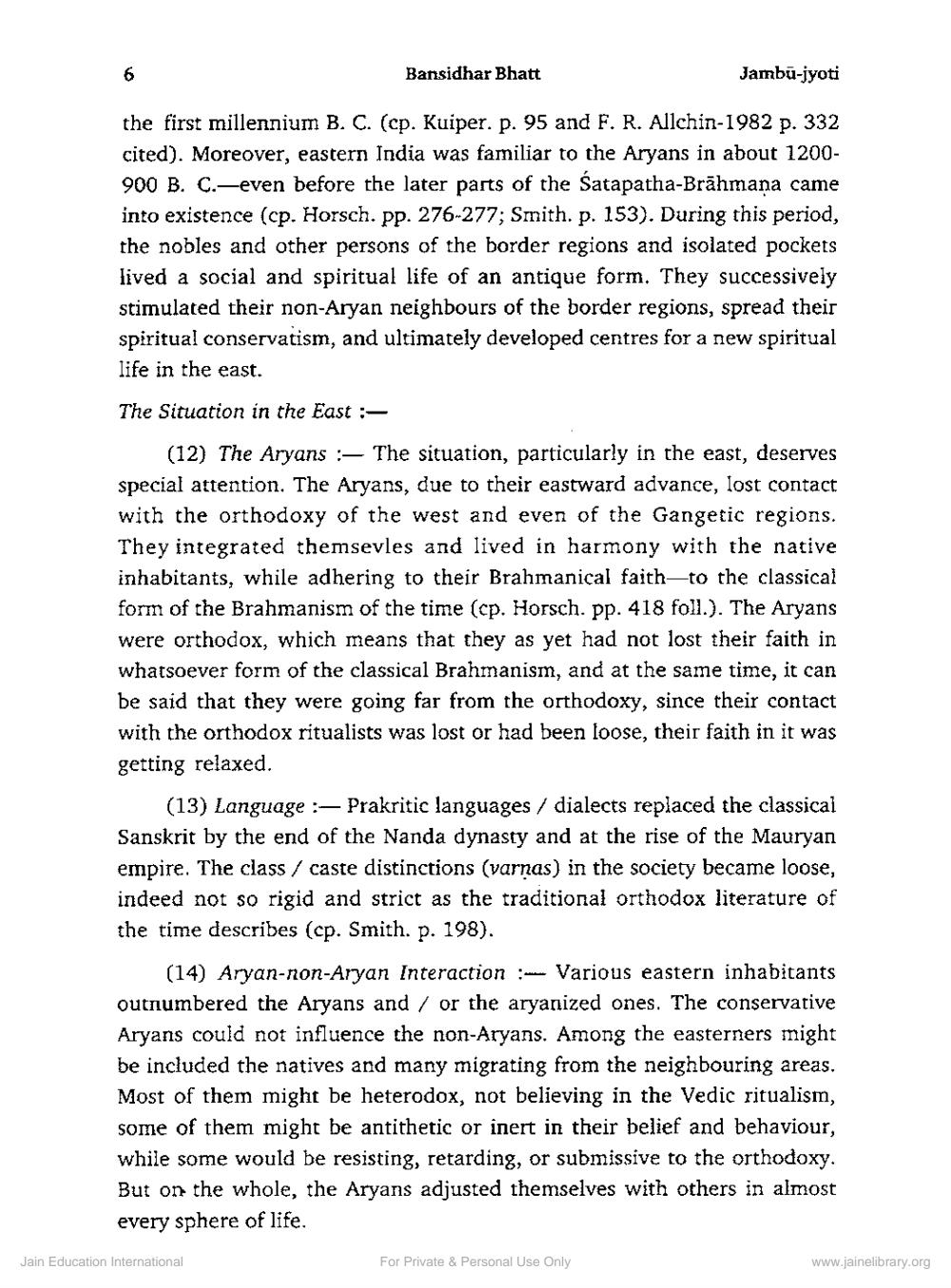________________
Jambu-jyoti
the first millennium B. C. (cp. Kuiper. p. 95 and F. R. Allchin-1982 p. 332 cited). Moreover, eastern India was familiar to the Aryans in about 1200900 B. C. even before the later parts of the Satapatha-Brahmana came into existence (cp. Horsch. pp. 276-277; Smith. p. 153). During this period, the nobles and other persons of the border regions and isolated pockets lived a social and spiritual life of an antique form. They successively stimulated their non-Aryan neighbours of the border regions, spread their spiritual conservatism, and ultimately developed centres for a new spiritual life in the east.
The Situation in the East:
:
(12) The Aryans - The situation, particularly in the east, deserves special attention. The Aryans, due to their eastward advance, lost contact with the orthodoxy of the west and even of the Gangetic regions. They integrated themsevles and lived in harmony with the native inhabitants, while adhering to their Brahmanical faith to the classical form of the Brahmanism of the time (cp. Horsch. pp. 418 foll.). The Aryans were orthodox, which means that they as yet had not lost their faith in whatsoever form of the classical Brahmanism, and at the same time, it can be said that they were going far from the orthodoxy, since their contact with the orthodox ritualists was lost or had been loose, their faith in it was getting relaxed.
6
Bansidhar Bhatt
(13) Language :- Prakritic languages / dialects replaced the classical Sanskrit by the end of the Nanda dynasty and at the rise of the Mauryan empire. The class/caste distinctions (varnas) in the society became loose, indeed not so rigid and strict as the traditional orthodox literature of the time describes (cp. Smith. p. 198).
(14) Aryan-non-Aryan Interaction: Various eastern inhabitants outnumbered the Aryans and/ or the aryanized ones. The conservative Aryans could not influence the non-Aryans. Among the easterners might be included the natives and many migrating from the neighbouring areas. Most of them might be heterodox, not believing in the Vedic ritualism, some of them might be antithetic or inert in their belief and behaviour, while some would be resisting, retarding, or submissive to the orthodoxy. But on the whole, the Aryans adjusted themselves with others in almost. every sphere of life.
Jain Education International
For Private & Personal Use Only
www.jainelibrary.org




